TV Station RKB
I Love Yu
DC259208![]()
あい・ラブ・優ちゃん [RKB]
![]()
![]()
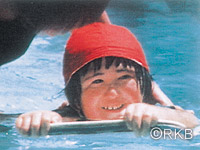
|Length : 48min. |Year : 1992 |
In "I Love Yu," acclaimed Japanese documentarist Eibun Kimura offers viewers a moving yet unsentimental portrait of his mentally retarded daughter, Yu. Kimura's chronological approach traces Yu's life from her birth to her pre-adolescent years. As director and narrator, Kimura shows - and tells - how much his daughter has achieved, despite her handicap. He also speaks matter-of-factly about the pain felt by the parents of mentally retarded children.
Bathing with Friends
DC239207![]()
愉快村はだか通り [RKB]
![]()
![]()
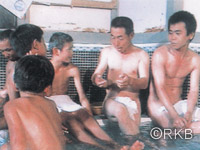
|Length : 12min. |Year : 1992 |
The public bath in the village of Sakasedani is a symbol of the village's old-style togetherness. From tending the boiler to scrubbing the bathtubs, the villagers work together to keep the bath going. "Bathing with Friends" highlights the traditional importance of the public bath as a community gathering place and also provides a glimpse of the type of rural culture that has virtually disappeared from modern Japan.
Capture the Wind – The Wind-Lens Turbine and the Future of Energy
DC221220![]()
風を集めて“レンズ風車”未来への挑戦 [RKB]
![]()
![]()
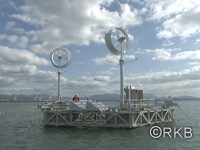
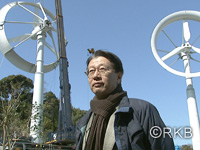
|Length : 46min. |Year : 2012 |
March 11, 2011—the day the Great East Japan Earthquake struck off the coast of Tohoku and caused a serious accident at the Fukushima No.1 Power Plant. Japan, which had relied on nuclear power for much of its energy, found itself at crossroads: how would it secure its energy future?
Coincidentally, this was the same day that two odd-shaped wind turbines were erected in Fukuoka City. The wind-lens turbine, a turbine with a unique brim surrounding its blades, was the brainchild of Kyushu University professor Yuji Ohya. Able to generate three times as much power as conventional wind turbines, it was a dream-inspiring machine. On the same day that Professor Ohya made his case for the need to shift to renewable energy, the Great East Japan Earthquake struck.
Previously, Professor Ohya had erected wind-lens turbines in China to provide energy for desert greenification, but they were destroyed, unable to withstand the harsh winds. As problems like these arose, Professor Ohya and his team resolved them one by one, gradually improving the turbine design.
With very few high wind areas on land, how can Japan increase wind power generation? According to Professor Ohya, the answer lies on the ocean. His dream is to use floating wind-lens turbines to create offshore energy farms. Experiments are now underway, and his team aims to build an offshore energy farm that will someday produce the same amount of power as a nuclear power plant.
This is the story of the researchers who worked tirelessly to develop the wind-lens turbine and the small factory workers who provided the technical support they needed. Above and beyond the goal of solving Japan's energy issues, their undertaking holds a clue for Japan's post-disaster recovery.
Flowers along the Riverbank
DC229202![]()
四季 おじいちゃんの花日記 [RKB]
![]()
![]()
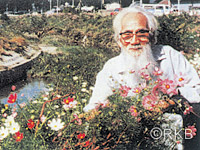
|Length : 12min. |Year : 1992 |
The flowers that bloom along the banks of the Yatsunami River are pretty enough. But to 78-year-old Sumio Okabe, the man who planted the flowers, they're more than just decoration. They're an affirmation of the joy of life itself. "Flowers Along the Riverbank" shows that planting and caring for flowers is just one of the volunteer community services performed by Okabe. He's also out every morning collecting trash. This heartwarming documentary shows how Okabe's selfless actions have endeared him to the local people.
- 1
- 2














